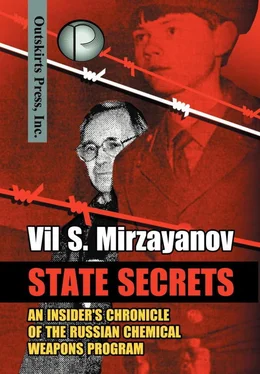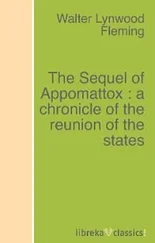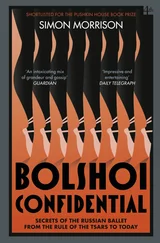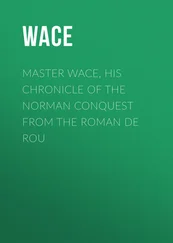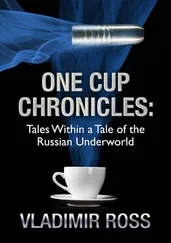As they tried to reach their poor “Vityusha”, it became clear that this was a silly and absurd death. The steep slope and height of the cliff did not leave any doubts about the tragic outcome. That was why all of the people who were running were amazed to see that one of the guests, who had already reached the high thin grass with the sprawling body, was laughing so loudly and merrily. Those who approached him soon understood that the “body” really did belong to “dear Vityusha”, but he was just in a deep sleep. Even the happy cries of the overexcited guests could not disturb his snoring. Suddenly, Vityusha reacted to the suggestion to “have a shot of alcohol”, and he sprang to his feet as if nothing had happened. You could see his face quiver only slightly, when he looked up at the steep cliff. Possibly, he remembered his flight off the cliff, the night before.
One of the prudent guests had brought a half-empty bottle of cognac with him (perhaps for the forthcoming commemoration or just from the need to have his precious drink with him at all times). He took it out and gave “Vityusha” a full glass, clinking his glass to the bottle to show that he too would like to have a sip.
Soon everybody was talking merrily and singing the praises of their host for his heroic deed and the strength of his body and spirit. Probably these qualities were not at all important for surviving a fall from such a height. Only the completely relaxed, yet strangely elastic body of a drunk could somehow deflect the shock of all the blows he took in his tumble flight off that cliff, while snagging tree branches, or banging into the compressed red clay protrusions sticking out of the wall. Also, since he was drunk, he never went into shock from the fear. Probably “Vityusha” just passed out and fell into a dream.
To his credit, this episode did not frighten Petrunin, nor did he stop trying to please his visitors from Moscow. He enjoyed meeting and seeing off his guests, until that happy day when he was appointed Director of GOSNIIOKhT. He understood that they held the key to his transfer out of this Hell-hole and into the capital. Until that moment, he had to work under a lot of other directors and continue as the Deputy Director for Science of the Shikhany branch of GOSNIIOKhT.
CHAPTER 8
Science and Scientists in GOSNIIOKhT
Russian VX gas – Substance 33 and the Basics of the Russian Binary Weapons
The true author of Substance 33, Sergei Zotovich Ivin and the first person to synthesize it, his graduate assistant Iya Danilovna Shelakova, received only a few minor prizes of little significance for the successful start-up of the Novocheboksary pilot plant which produced it.
I am confident that this was a demonstration of “love” on the part of the Director Martynov, since Ivin was a talented scientist. Military specialists universally recognized his authorship of Substance 33 (O-iso-butyl-S-2 – diethylaminoethyl-methylphosphonothiolate).
Ivin repeatedly claimed that he had laid out the investigation of thiocholine ethers (which was used for creating the chemical agent VX), even before the well-known publication by the Swedish scientist Tammelin (O-ethyl-S-2-di-iso-propylaminoethyl-metylphosphonothiolate). [23] On the initial discovery, L.E. Tammelin, “Dialkoxy-phosphorylthiocholines, alkoxymethyl-phosphorthiocholines, and analogous choline esters,” Acta Chemica Scandinavica 11(1957): 1340-9. For a brief history of “V” agents, Stockholm International Peace Research Institute, The Problem of Chemical and Biological Warfare: A Study of the Historical, Technical Military, Legal, and Political Aspects of CBW and Possible Disarmament Measures, The Rise of CB Weapons , vol. 1 (New York: Humanities Press, 1971): 74-5.
After this publication about the high toxicity of thiocholine ethers, orders were issued in the U.S.S.R. for large-scale synthesis of this group of compounds at four different locations: TSNIVTI [24] See ref.13.
(under S.Z. Ivin and I.D. Shelakova), GOSNIIOKhT (under Gladstein who lagged considerably behind Ivin – apparently this explained his jealousy), the Voroshilov Military Academy of Chemical Defense (in the department headed by Ivan Knunyants, who repeatedly declared his skepticism within his closed circle since he considered thiocholine to be a mistake made by Americans and Soviet specialists), and the Institute of Elemental Organic Compounds of the Academy of Science of the U.S.S.R. (under the leadership of Mikhail I. Kabachnik, though apparently Professor Sergey Godovikov ran the business.) This last group worked without any success, and it was completely dependent on Gladshtein, since the synthesis model was tested in GOSNIIOKhT (then known as Post Office Box 702).
The Administrative Building of GOSNIIOKhT, June 2002.
Professor Sergey Ivin (standing) and his laboratory group in Moscow, 1968. Third from the right Iya Shelakova, and first from the right in the second row is Professor Georgi Drozd.
At that time, the leadership of TSNIVTI, under the command of General Knunyants, refused to confirm Ivin’s claim about his independent research on thiocholine ethers. The pretext of their argument was that if such a compound had any toxicity, it would have a high boiling point or be a jelly-like product, making it unsuitable for practical applications.
Furthermore, the choice of Substance 33 was an unfortunate one. In summary, the physical chemical properties (compared with VX it had far too low a volatility), the chemical properties (compared with VX it was much too unstable for long term storage), and the toxicity (in contact with air it absorbed moisture like a vacuum pump and quickly lost its active properties, though the toxicity fell only negligibly since the decomposition products were also highly toxic), all made its use practical only for intravenous and intramuscular applications.
The situation was further aggravated by its production technology, which would not permit an active product yield of more than 90%. Therefore, the technical production of Substance 33 in the Novocheboksary chemical plant, was marked by the number 87%, and to a significant extent it was predetermined that its stability in long term storage would be poor.
At the end of 1980, the laboratory of Georgi Drozd was the first to pay attention to these problems. For a long time prior to that, the lab had researched various methods of synthesizing Substance 33, and had compared the characteristics they found to the properties of VX. This comparison looked very unfavorable for Substance 33, as VX could be stored without any appreciable change in its original level of activity for more than 20 years.
A panic literally set in when the results of Drozd’s research were formally registered in a scientific report, which was circulated to Guskov and the military representatives for GOSNIIOKhT. Still, they did not forget to give Drozd orders forbidding him to research this problem further.
My good friend, Professor Igor Revelski, was instructed to verify the disturbing facts. He corroborated the sudden change in the chemical composition of Substance 33 and its declining activity in storage. The scientific report of Igor Revelski met exactly the same fate as the report prepared by Drozd. Frequently in the Soviet system of science, researched facts were sacrificed for the sake of the financial and personal interests of the bosses who were in charge of science in the country. Unfortunately, this kind of thing can happen just about anywhere, even in a democratic country like the U.S.A.
In Drozd’s opinion, the American scientists had a theoretical blowout in their research program, when trying to use the last stages of their technology of the production of VX gas for its binary version. [25] The Bigeye bomb was developed to mix diisopropyl aminoethylmethyl phosphonate with sulfur to make VX. Frederick R. Sidell, Ernest T. Takafuji, and David R. Franz, Medical Aspects of Chemical and Biological Warfare, Textbook of Military Medicine, Warfare, Weaponry, and the Casualty: Part I (Office of the Surgeon General: US Army 1997): 65-6, 70-1.
Читать дальше
